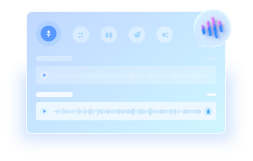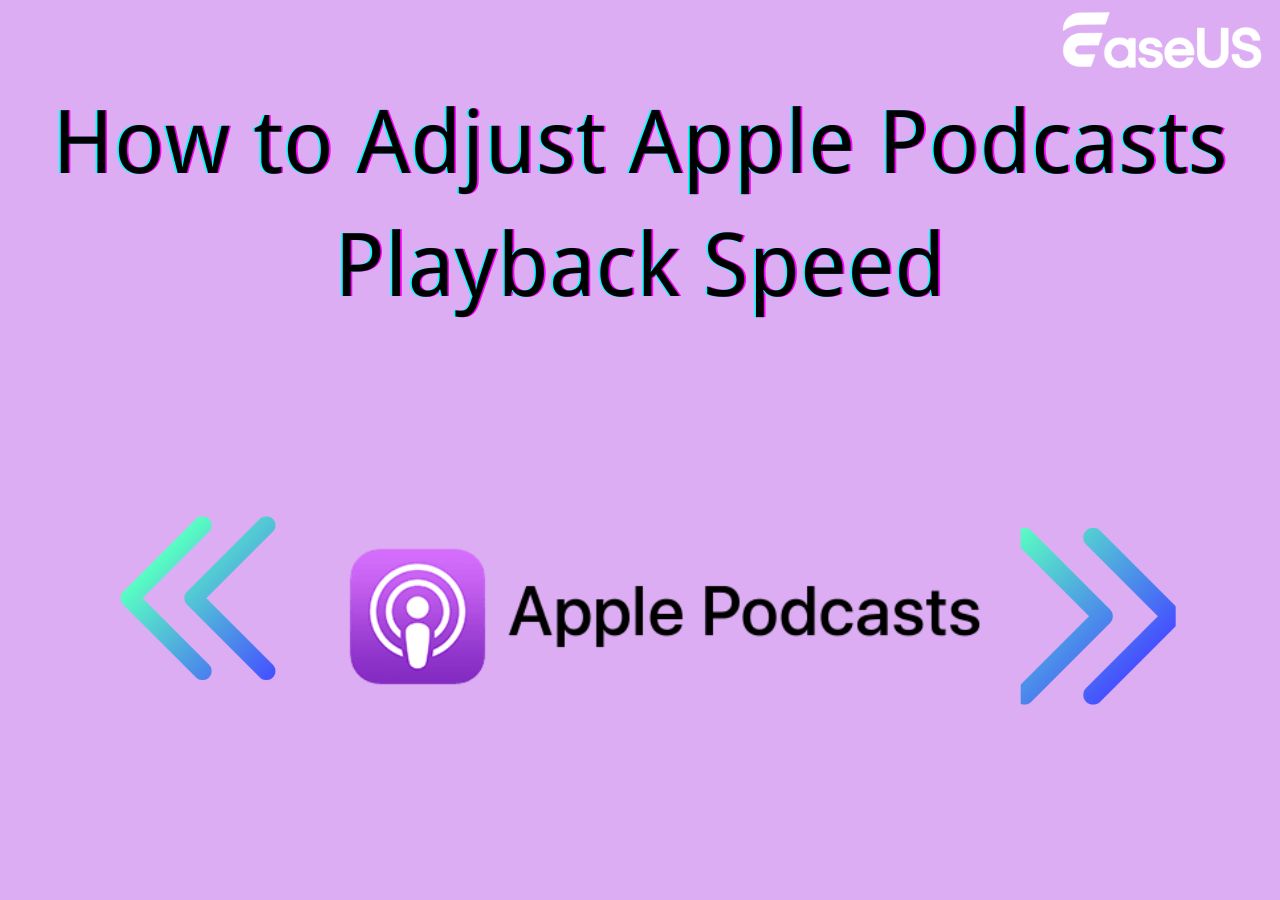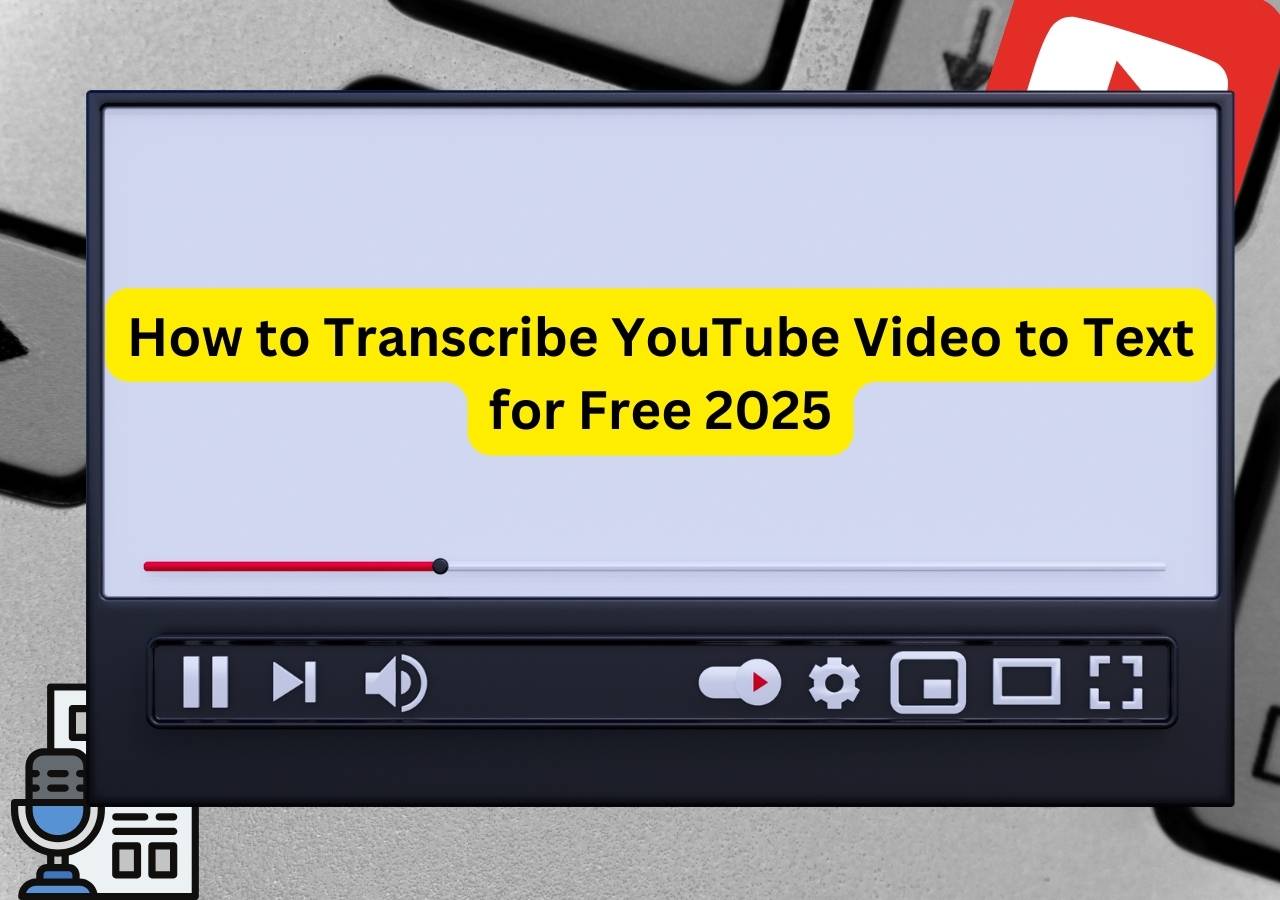-
![]()
Sofia Albert
Sofia has been involved with tech ever since she joined the EaseUS editor team in March 2011 and now she is a senior website editor. She is good at solving various issues, such as video downloading and recording.…Read full bio -
![]()
Melissa Lee
Melissa Lee is a sophisticated editor for EaseUS in tech blog writing. She is proficient in writing articles related to screen recording, voice changing, and PDF file editing. She also wrote blogs about data recovery, disk partitioning, data backup, etc.…Read full bio -
Jean has been working as a professional website editor for quite a long time. Her articles focus on topics of computer backup, data security tips, data recovery, and disk partitioning. Also, she writes many guides and tutorials on PC hardware & software troubleshooting. She keeps two lovely parrots and likes making vlogs of pets. With experience in video recording and video editing, she starts writing blogs on multimedia topics now.…Read full bio
-
![]()
Gorilla
Gorilla joined EaseUS in 2022. As a smartphone lover, she stays on top of Android unlocking skills and iOS troubleshooting tips. In addition, she also devotes herself to data recovery and transfer issues.…Read full bio -
![]()
Rel
Rel has always maintained a strong curiosity about the computer field and is committed to the research of the most efficient and practical computer problem solutions.…Read full bio -
![]()
Dawn Tang
Dawn Tang is a seasoned professional with a year-long record of crafting informative Backup & Recovery articles. Currently, she's channeling her expertise into the world of video editing software, embodying adaptability and a passion for mastering new digital domains.…Read full bio -
![]()
Sasha
Sasha is a girl who enjoys researching various electronic products and is dedicated to helping readers solve a wide range of technology-related issues. On EaseUS, she excels at providing readers with concise solutions in audio and video editing.…Read full bio
Content
Quick Tips
Enable Flex Time
Use Global Tracks
Use List Editor
Tempo Operations
Change Tempo Online Easily
Wrapping up
Adjust Tempo in Logic FAQs
5107 Views |
6 min read
Quick Tips
▶️To change the tempo in Logic Pro X on your Mac, select all tracks, press Command F to choose one Flex Time option, and then experiment with the parameters to change tempos.
Artists and content creators must change tempo when arranging a song, remixing attack, syncing audio to video, or experimenting with tempos to enhance the mood or energy of their music.
Logic Pro is a digital audio workstation developed by Apple for recording, arranging, mixing, and changing tempo. Whether you want to speed up a song for added excitement or slow it down for a more laid-back vibe, you can find the answers here.
| Methods📝 | Pro✅ | Con🚫 | Difficulty📈 |
|---|---|---|---|
| Enable Flex Time | Easy and basic tempo change. | May produce artifacts. | Easy |
| Use Global Tracks | Change the tempo in mid of the song. | Sometimes, it isn't musical. | Medium |
| Use List Editor | Offer precise control over many tempo changes. | Challenging for users to visualize tempo. | Medium |
| Tempo Operations | Offer precise control over tempo changes in real time. | May be difficult for beginners. | Difficult |
Enable Flex Time
Similar to changing tempo in GarageBand, Flex Time in Logic Pro streamlines the process of editing timing within audio clips. It allows for compressing or expanding time between specific events without cutting or moving audio.
Users can precisely adjust the timing of notes and beats by using Flex markers. The algorithm identifies transients, enabling accurate edits while maintaining audio integrity.
Advantages include precise timing adjustments and tempo changes without pitch alteration. However, excessive use may introduce artifacts and require careful management for seamless edits.
Step 1. Highlight all files.
In the tracks area, hold Shift and click the last track to select all files, then click on Command F to open your options in "Flex Time."
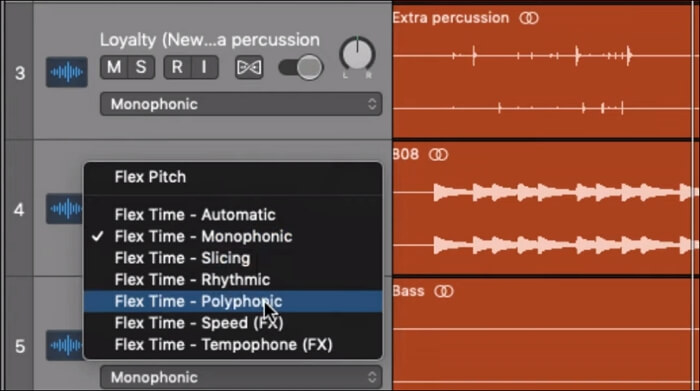
- Automatic: Automatically detects and adjusts the timing of audio recordings.
- Monophonic: Ideal for solo instruments and voices, playing one note at a time, perfect for solo vocal performances or melodic instruments like bass guitars.
- Slicing: Divides audio at transients and plays each slice at its original speed. "Zone" suits drums and percussion well.
- Rhythmic: Stretches audio by looping between slices to fill gaps. It's ideal for rhythmic guitars, keyboard parts, and Apple Loops.
- Polyphonic: Time-stretches audio using phase vocoding, maintaining pitch while adjusting time. It yields high-quality results and is suitable for complex polyphonic content like guitar chords, piano, chorus, and intricate mixes.
- Speed: Alters the playback speed of the material, affecting both tempo and pitch. Primarily suited for percussive content due to pitch changes.
- Tempophone: Replicates the mechanical sounds of tape-based time-stretching devices, resembling particle synthesis techniques. It's ideal for creative special effects.
Step 2. Change the tempo.
Experiment with the tempos at the control bar and listen to it.

Use Global Tracks
The Global Tracks Button in the Track List Header contains the shortcut menu for Arrangement, Marker, Movie, Signature, Transposition, Tempo, and Beat Mapping. Click on each item to decide which track to show. This method works when you want to change the tempo mid-song in Logic Pro X.
Step 1. Open up the global settings.
Click the global tracks icon or press "G" to show global tracks.
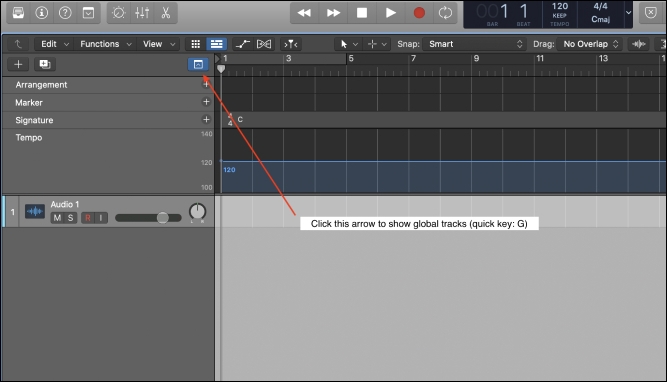
Step 2. Create the start and endpoints.
Click to create the start and end points and move the endpoint up and down for your desired tempo. Lift it up to speed up MP3 and drop the curve to slow down the section.

Step 3. Smooth tempos.
Then you'll see the darker point called the "tempo curve automation point," drag it in the middle of two points for a smooth effect.

Change Tempo in Pro Tools in 5 Easy Ways
How do you change the tempo in Pro Tools without changing the audio? This article provides 5 internal ways for tempo tweaking.
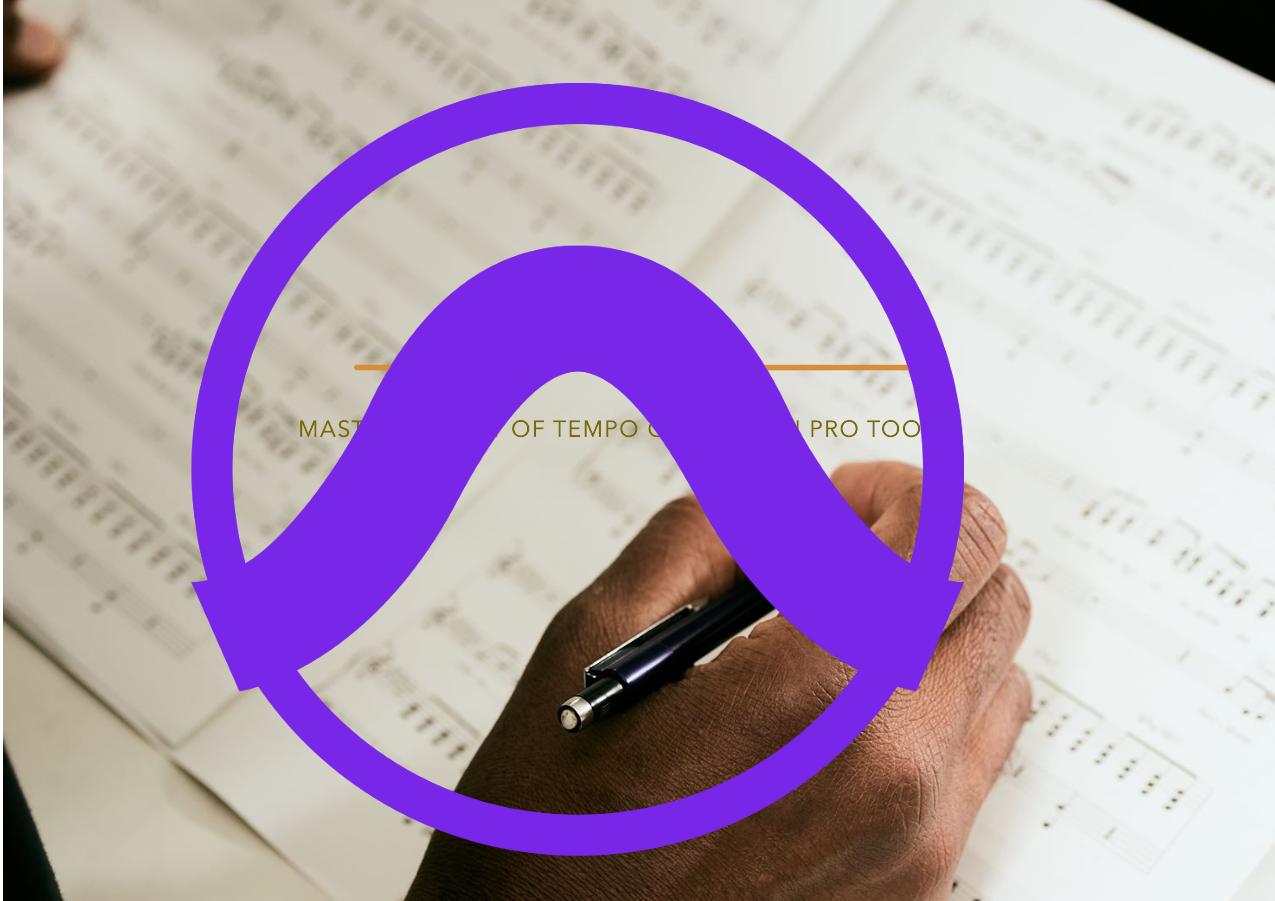
Use List Editor
At times, the tempo resolution in the tempo track lane may not meet their requirements, and projects with numerous tempo changes can be challenging to handle. That's why we'll head to the list editors for more precision.
While the drop-down global tracks window provides a visual overview of tempo variations, the tempo list is equally valuable. Fine-tuning tempo changes is often easier using the tempo list.
Step 1. Show tempo list.
Click the list editor button in the control bar and click on "Tempo" or use hotkeys Command + D. If you use the BPM counter in the Metering folder, you'll find the tempo of your song currently.
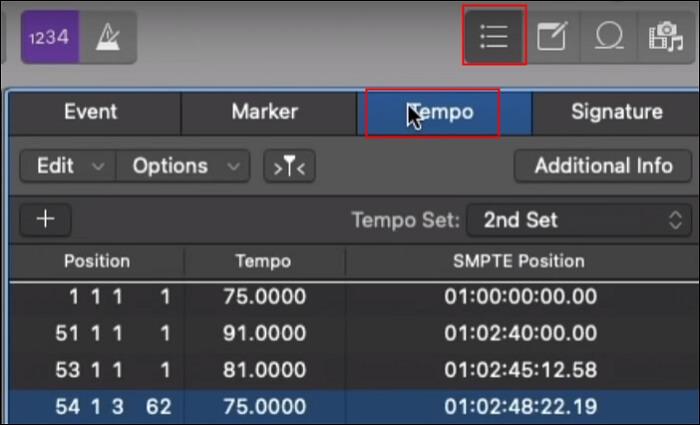
Step 2. Change the tempo.
Position the playhead where you want the tempo to change. Click the plus icon in the tempo list to create a new node. Click and drag or type in a specific tempo value.

Forward these methods to other Logic Pro users!
Tempo Operations
Tempo Operations in Logic Pro allow you to effortlessly create and edit tempo changes. The window instantly shows the selected area for editing, with changes graphically displayed in real time. This ensures you can visualize the effects of your edits as you make them.
Step 1. Find tempo operations.
Go up to "Edit" > "Tempo" > "Tempo Operations…" to open the window.
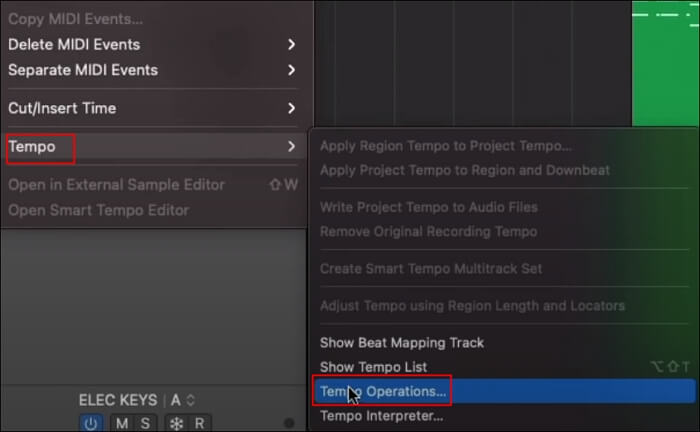
Step 2. Select the operation.
Choose one operation from the dropdown and adjust the position (you can also use the cycle range to set the position), time, density, and tempo. Then hit "Apply."
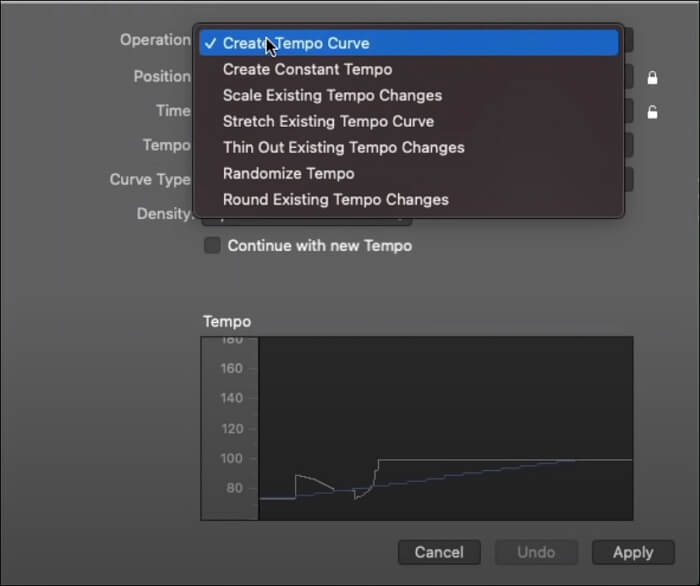
- Create Tempo Curve: Easily generate multiple tempo change events using minimal parameters, ensuring a seamless transition in tempo.
- Create Constant Tempo: Sets a consistent tempo within the designated area, with the default option determining an average tempo based on existing events.
- Scale Existing Tempo: Adjusts existing tempo changes proportionally, enabling modification of project tempo while preserving relationships between subsequent changes.
- Stretch Existing Tempo Curve: Extends or compresses an existing tempo curve to suit specific requirements.
- Thin Out Existing Tempo Changes: Decreases the number of tempo alterations in the chosen section.
- Randomize Tempo: Introduces random tempo fluctuations according to user-defined parameters.
- Round Existing Tempo Changes: Rounds existing tempo changes within a specified range to whole BPM or 1/10 BPM units for cleaner synchronization.
Change Tempo Online Easily
To make things easier, here's a free online tempo changer made for complete audio editing, including tempo changes, pitch and volume adjustment, key finding, and vocal/noise removal.
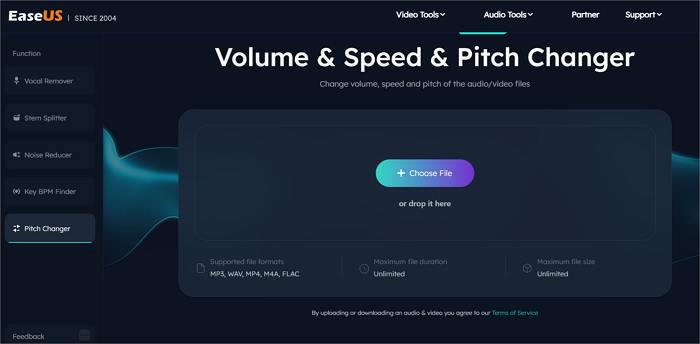
EaseUS online tempo changer works by adjusting the song's playback speed from 0.5 to 1.5 and, therefore, changing the tempo accordingly. You can upload unlimited MP3/WAV/MP4/M4A/FLAC files without size limits. This free volume booster also separates instruments from songs and makes karaoke versions. You can visit it here to alter your tempo with ease.
Key Features
- Change the tempo of a track efficiently.
- Free access without login.
- Support MP3/WAV/MP4/M4A/FLAC files.
- Upload unlimited files.
- Multi-purpose audio tool.
How to change song speed for tempo changing:
Step 1. Enter the main interface of EaseUS Online Speed Changer. The left sidebar shows new functions of this online tool. Find "Pitch changer" and click it.

Step 2. Then, drop the audio/video file in the blank. It supports multiple file formats, including MP3, MP4, WAV, M4A, and FLAC.
Step 3. The website will analyze your file with AI. You can drag the little dot in the "Speed" section to slow down or speed up with a range of 0.5X to 1.5X.
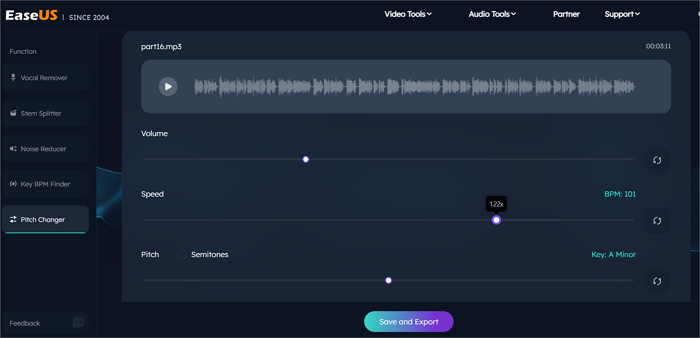
Step 4. Click "Save and Export" to download the processed file to your local file location.
Wrapping up
Whether you're a music artist remixing a song or a YouTuber synchronizing background music to your videos, adjusting tempo is essential. Logic Pro X provides various tools for mid-song tempo adjustments without affecting audio quality, though manual tweaking is necessary.
For hassle-free automatic tempo changes, check out EaseUS's online tempo changer to streamline the process.
Adjust Tempo in Logic FAQs
1. How do I change the speed of a track in logic?
In Logic Pro, click on the Varispeed button atop and click the upper part of the display and adjust the speed percentage.
2. What is the shortcut for tempo in Logic?
Use Option-Shift-T to open the tempo list in Logic.
3. Where is the tempo list Logic?
Select the List Editors button located in the control bar and click on "Tempo." Next, opt for "View" > "Show" List Editors, and once again, click on "Tempo."
